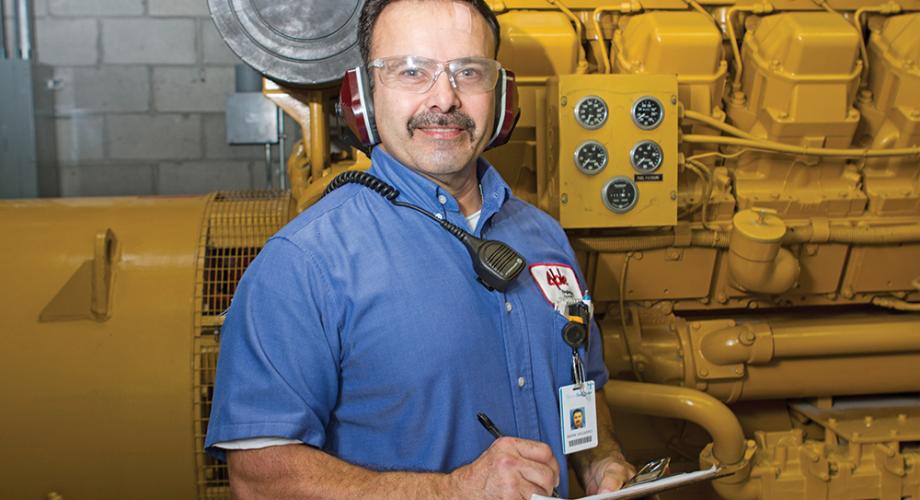In the world of real estate, no facility requires more thoughtfulness by building owners and operators than apartment buildings. Why? Put simply, apartments are residents’ homes. In buildings such as offices or retail spaces, tenants leave at the end of the day and go home. In rental housing, these residents are home.
This changes how the building is designed, marketed and, most importantly, operated.
For this reason, making maintenance (both general and preventative) a priority helps to keep the building and resident experience running smoothly. When done regularly and effectively, it will reduce common area maintenance charges passed through to residents. This reduced financial impact on residents creates happier occupants and better resident-living experiences.
Beyond ensuring the building is well-kept for the sake of residents, effective maintenance also helps building owners preserve expensive assets. When properly cared for, assets such as water heaters, elevators and plumbing can run longer and more efficiently, thus increasing the long-term return on these investments.
Creating this optimal experience can be achieved by applying the following best practices in general and preventive maintenance.
Separate General and Preventive Maintenance
The first step toward achieving effective maintenance efforts is to embrace both general and preventive maintenance. More importantly, owners should recognize each is equally essential to the longevity and profitability of a building.
This may seem like an obvious separation, yet placing these maintenance tasks into two separate categories ensures both receive proper attention.
General maintenance often includes tasks such as:
- Checking and changing hallway and lobby lighting fixtures
- Cleaning common areas to make them inviting and aesthetically pleasing
- Keeping alleyways clean and clear to allow for easy move-in and move-out access
Maintaining the areas that residents and visitors see every day is an important part of apartment building upkeep. If these areas become run down or dirty, residents can lose pride in their building and may begin to look elsewhere.
Of equal importance, preventive maintenance includes regularly checking and cleaning larger equipment to make sure everything is running properly. This is the very essence of a good asset preservation strategy. Training staff on the ins and outs of preventive maintenance is a critical investment that should be made by building owners to increase the lifespan of equipment.
Utilize Operating Standards
Deploying a set of building-wide operating standards and platforms is key to increasing the ROI of a building.
Standardized maintenance practices ensure uniformity for each task across all shifts and all buildings, helping to keep assets running smooth day and night. Additionally, these platforms can be written to span all sectors of operations, from cleaning staff to concierges. This is especially crucial for rental housing owners as a means to alleviate any concerns pertaining to operations running differently under independent management and staff.
Operating standards and platforms also streamline training and eliminate any discrepancies surrounding the onboarding of new employees. Everything is documented in a single operations manual, omitting any room for inaccurate interpretation.
In addition to creating streamlined training and operating procedures, these standards and platforms reduce maintenance errors. They also help to ensure everything is accomplished with high quality.
Leverage Maintenance Logs
As is the case with any organization comprised of several moving parts, communication among staff is critical to successful building operations. Without frequent communication, there is a risk for tasks falling through the cracks or unsatisfactory results, which can be detrimental to equipment and overall building safety.
However, it may not be feasible for staff to hold detailed meetings with superiors and peers to keep them updated on the status of every task throughout the building. The solution? Leverage maintenance logs and checklists as a simple, yet essential, form of communication to keep operations running smoothly.
Requiring staff to utilize maintenance logs ensures all repairs follow protocol and both preventive and general jobs are done regularly. Maintenance logs also assure all maintenance is consistently done every time—no matter who takes the lead.
More important, this form of communication holds maintenance staff accountable. For example, the bottom of each maintenance log may require the lead staffer to sign off, essentially pledging the task was properly and completely done and that any issues found were either taken care of or delegated.
Implement Sustainability Initiatives
Every building owner should identify and implement sustainability initiatives that can help increase the effects of maintenance.
Owners of newly constructed buildings have the initial upper-hand, because designers have already included sustainable features within the blueprints of the building, such as water and heat fixtures that reduce energy use. These fixtures not only help reduce CO2 emissions, but also save money in energy and maintenance costs.
In this sense, it may seem as though older buildings are at a disadvantage, which on the surface may be true; however, this does not mean that sustainable initiatives cannot be implemented into these buildings to help save time and money on maintenance.
For example, buildings can transition to LED lights in all common areas and apartments. LED lights use less energy and, as a result, need to be changed less often, saving building owners money on restocks and on the time it takes staff to change the bulbs.
On a larger scale, implementing bigger, smarter sustainable measures is also possible with older buildings. Replacing equipment, such as large-scale water heaters with in-unit water heaters is an excellent example of sustainable preventative maintenance that helps keep buildings running longer and stronger.
Building maintenance may seem like—and rightfully so—a never-ending requirement for apartment community owners. Fortunately, by executing general and preventative maintenance best practices, building owners are able to ease their daily burden and simplify the maintenance process.
Beyond making upkeep easier on staff, these practices also help increase owners’ ROI and keep residents happier—which is a win-win-win for everyone.
John Rey is Senior Vice President of Engineering for Able Services. Colleagues Michael Roach, and Dan Lawlor, engineering managers, contributed.
